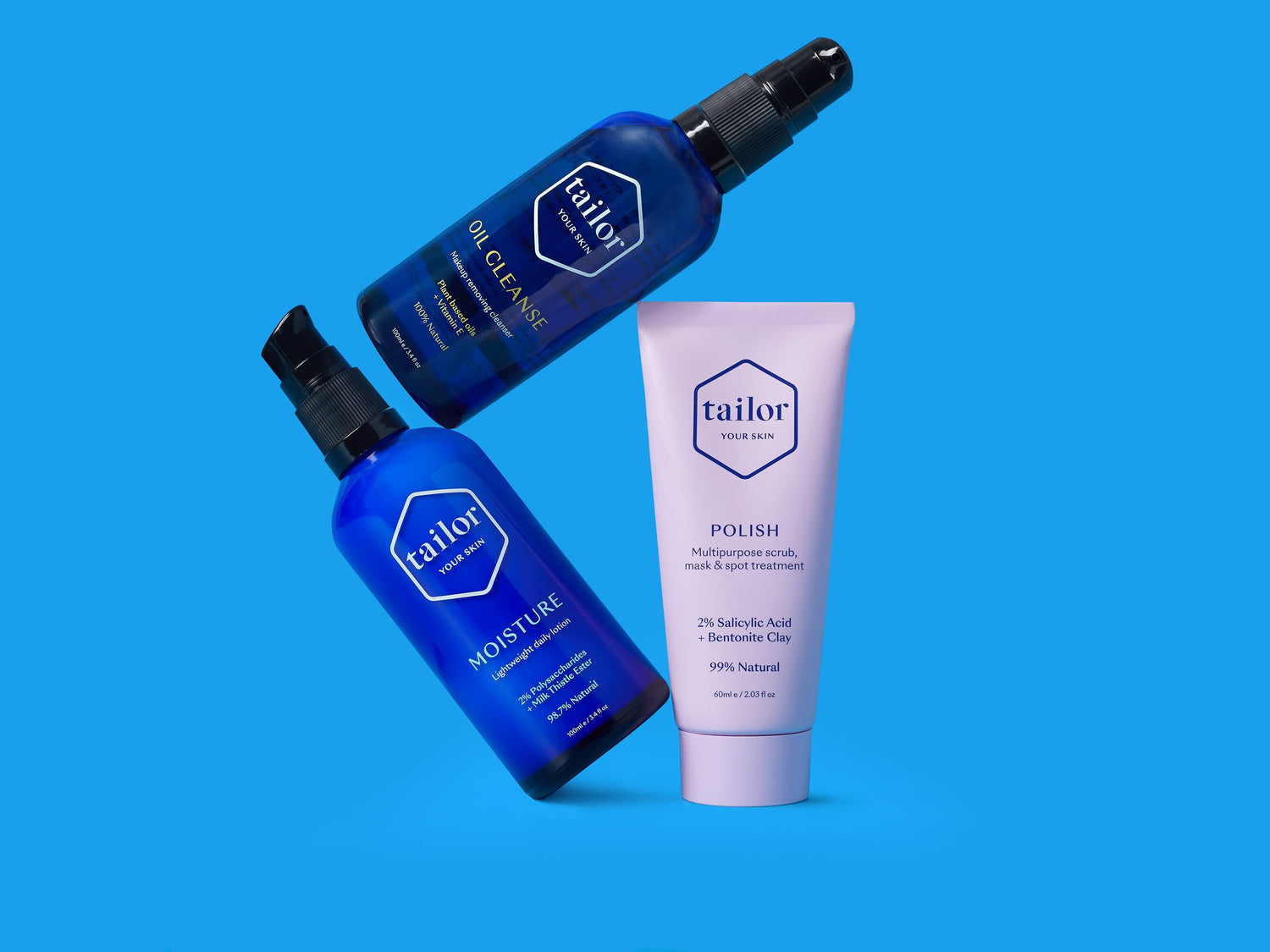You might switch between describing your skin as dry and dehydrated, but did you know they're not the same thing?
It might not seem like a big deal, and it’s easy to think your skin is one when it’s really the other, but pinpointing helps to determine what ingredients and products to look out for to bring back plump, glowing skin. Before we get started on how to best nourish your skin, first things first; let’s determine, is your skin dry or dehydrated?
What are the signs of dry skin?
Dry skin lacks oils and is also a skin type. Very dry skin may look flaky, rough or cracked. Dry skin isn’t all bad though - you probably have small pores, and breakouts are few and far between.
What causes dry skin?
Dry skin isn’t producing enough oil or sebum. An essential element to retain moisture. This oil production may be down to genetics, ageing, or a lack of essential fatty acids (EFAs) in your diet. EFA’s are key because our bodies can't make them, so they need to be consumed in your diet. They help to protect your skin cells against water loss (TEWL), which in turn prevents itchy, flaky skin and dehydration.
What causes dehydrated skin?
Dehydrated skin lacks water and is a skin condition so it can be remedied through skincare, diet and lifestyle changes. Your skin may be dehydrated but not dry because it's oily. Or it could be dry and dehydrated because it lacks both oil and water. If your skin is dehydrated, you’ll find your complexion is lack-lustre and dull or “tired” and lacking elasticity. The texture can look a little rough and may have flaky, dry patches (hence thinking you have dry skin!). Dehydration is caused by damage to the skin barrier. This damage can be caused by changes in temperature, harsh weather, stress, sun damage and lack of sleep. As mentioned above, your skin also might be losing hydration and moisture through a compromised epidermis. Now you’ve determined whether your skin is dry, dehydrated or both, let’s jump into the remedies…

How do I treat dry skin?
Dietary essential fatty acids
As we mentioned, dry skin is lacking in oil, so you need to give back to your skin by feeding and nourishing it. The fatty acid composition of the skin can be significantly changed through diet, so this is a great place to start. Omega 3 and 6-rich foods are particularly beneficial to help prevent water loss. You can find them in foods such as flaxseeds, walnuts, soybeans, tofu, eggs and oily fish like salmon and tuna.
Cannabis Sativa - Hemp seed oil
It’s key to pair dietary EFAs with topical, because up to 60% of dietary EFAs can be oxidised by the liver - meaning they never reach the skin! We want to tell you about one of our faves: Cannabis Sativa (hemp) seed oil. Rich in both omega 3 and 6, cannabis sativa seed oil is the ultimate skin food. It provides long-lasting moisture; with continuous use over time, it helps improve your skin's ability to retain moisture. This is one of the hero ingredients in Illume, which we've paired with squalane, a naturally-occurring moisturising component of the skin, to create nourishing serum to feed your skin.
Sunflower seed oil
Another fat we love for your skin - sunflower seed oil. We know it’s amazing, but science says so too - using it daily for two weeks results in more EFAs in your skin, balances TWEL and reduced scaliness. Sunflower seed oil is the base of Oil Cleanse, making it the ideal daily cleanser for dry skin (as well as being the best makeup remover - bye bye panda eyes!)

How do I treat dehydrated skin?
Water intake
Upping your water intake is a great place to start, as we all know 8 glasses + of water a day is beneficial to all your organs, not just your largest! However, your skin is the last place to receive the water you drink, as your body prioritises other organs first. So, it’s key to pair it with hydrating water based serums, like Hydrate. Why Hydrate? Because of its two key ingredients...
Hyaluronic acid
Hyaluronic Acid is one of the most exciting ingredients for dehydrated skin. Why? Because it's a humectant; it actively draws in and retains water, binding to 1000x its weight in water. Hydrate is made with 2% hyaluronic acid, increasing the amount of water it can draw into your skin. In addition to hydrating, this also plumps your skin and reduces fine lines - win win!
Niacinamide (Vitamin B3)
Niacinamide is one of the latest buzz ingredients for a reason - actually, for a few; evidence shows topical niacinamide can increase your skin’s production of ceramides, which protect the skin and lock in moisture, plumping the skin and reducing fine lines. Paired with hyaluronic acid, this duo is a go-to for hydration.

References
Prottey C, Hartop PJ, Press M. Correction of the cutaneous manifestations of essential fatty acid deficiency in man by application of sunflower-seed oil to the skin. J Invest Dermatol. 1975;64(4):228-234. doi:10.1111/1523-1747.ep12510667
Fathordoobady, F et al. Hemp ( Cannabis Sativa L.) Extract: Anti-Microbial Properties, Methods of Extraction, and Potential Oral Delivery
Callaway J, Schwab U, Harvima I, et al. Efficacy of dietary hempseed oil in patients with atopic dermatitis. J Dermatolog Treat. 2005;16(2):87-94. doi:10.1080/09546630510035832
Papakonstantinou, Eleni et al. “Hyaluronic acid: A key molecule in skin aging.” Dermato-endocrinology vol. 4,3 (2012): 253-8. doi:10.4161/derm.21923
Levin, Jacquelyn, and Saira B Momin. “How much do we really know about our favorite cosmeceutical ingredients?.” The Journal of clinical and aesthetic dermatology vol. 3,2 (2010): 22-41.
Tanno O, Ota Y, Kitamura N, Katsube T, Inoue S. Nicotinamide increases biosynthesis of ceramides as well as other stratum corneum lipids to improve the epidermal permeability barrier. Br J Dermatol. 2000;143(3):524-531. doi:10.1111/j.1365-2133.2000.03705.x

